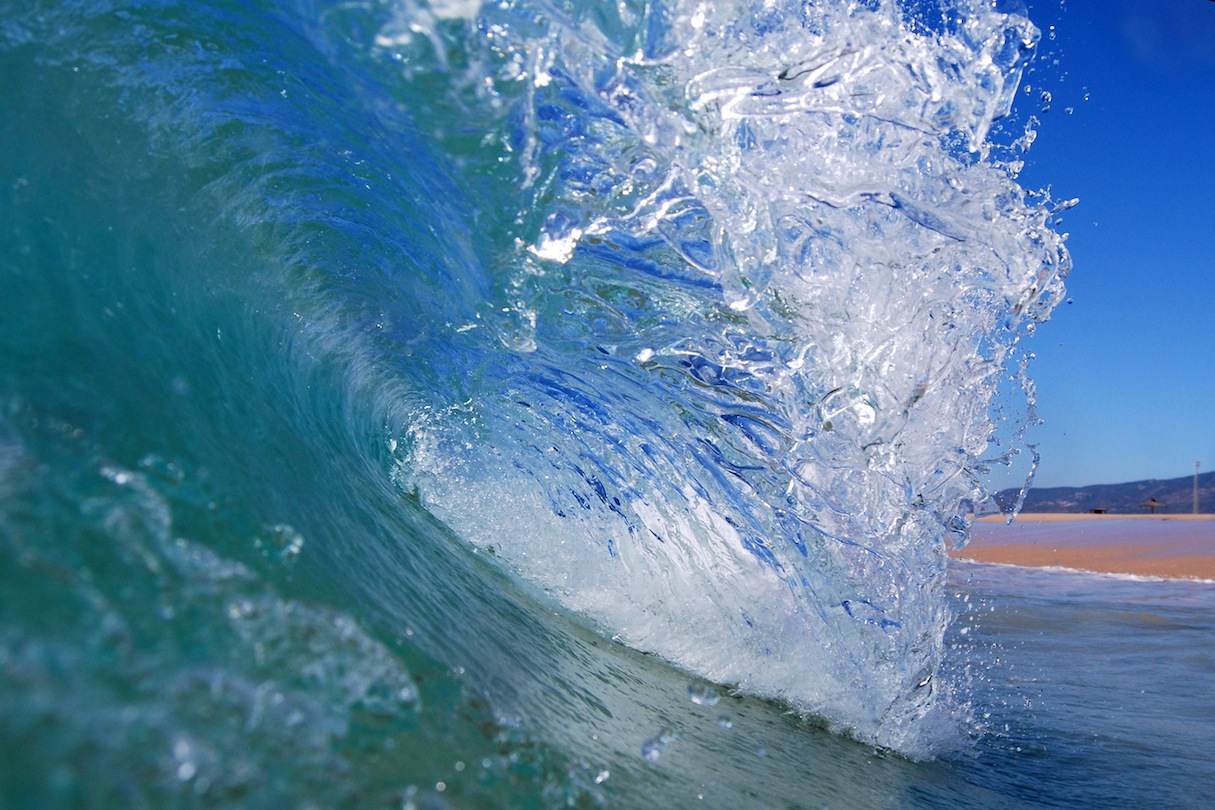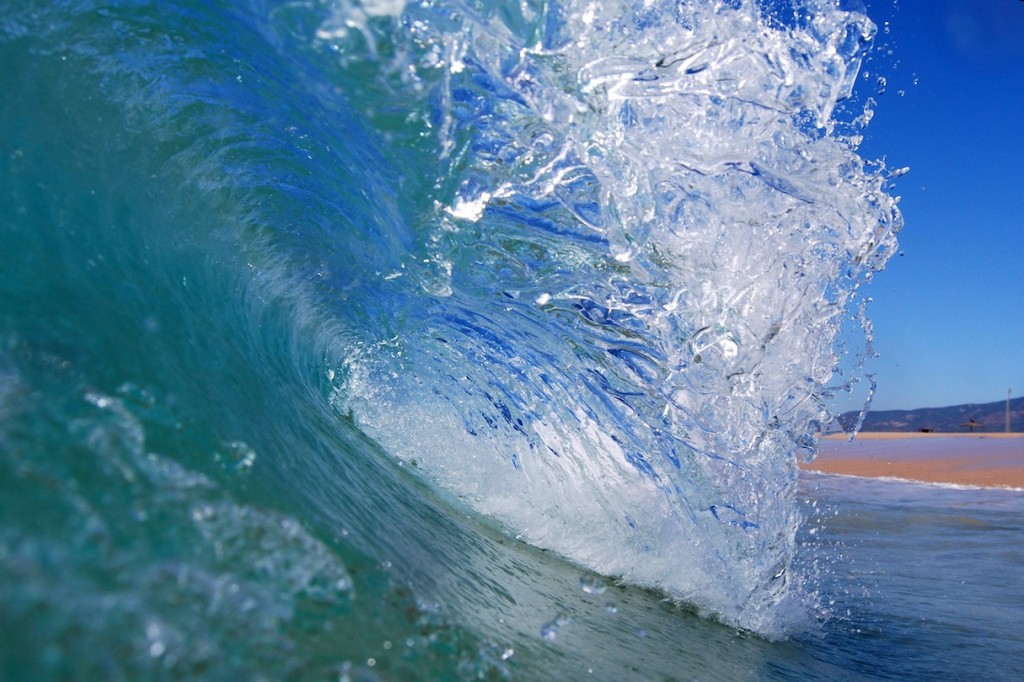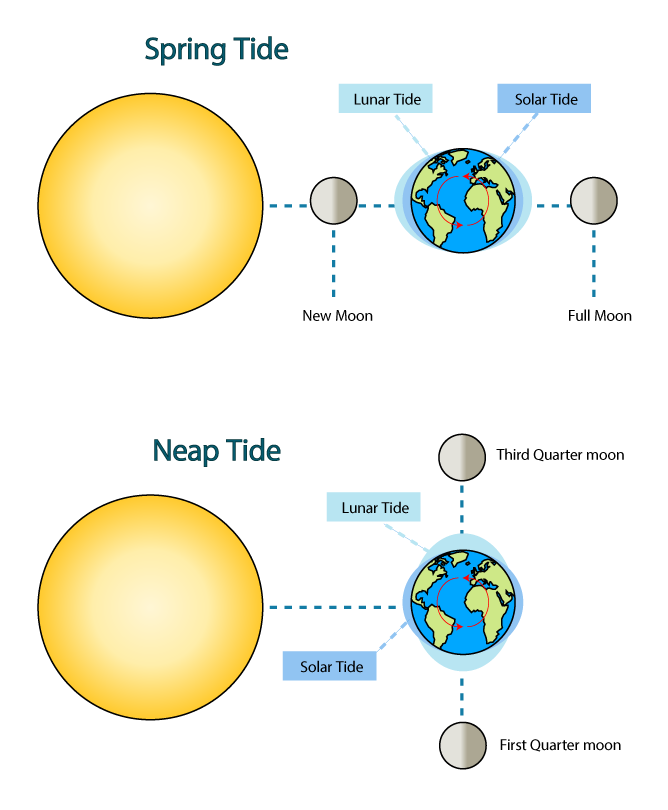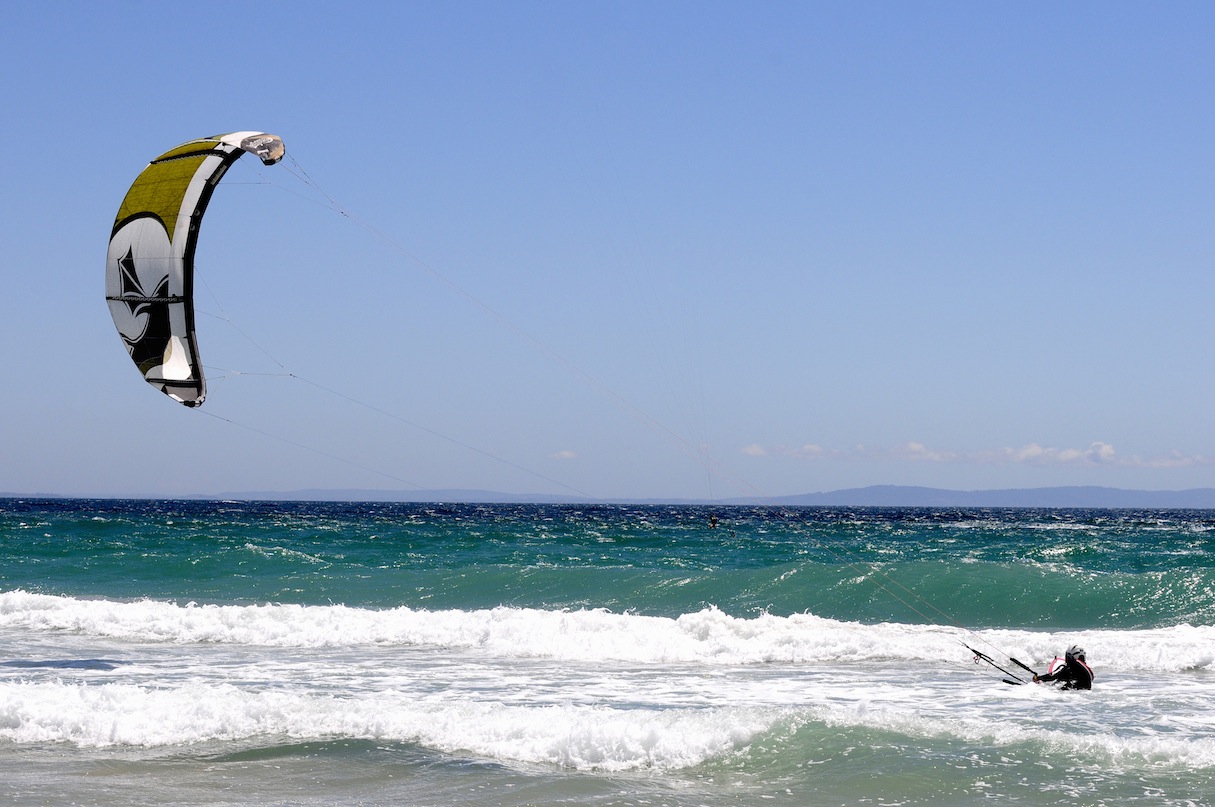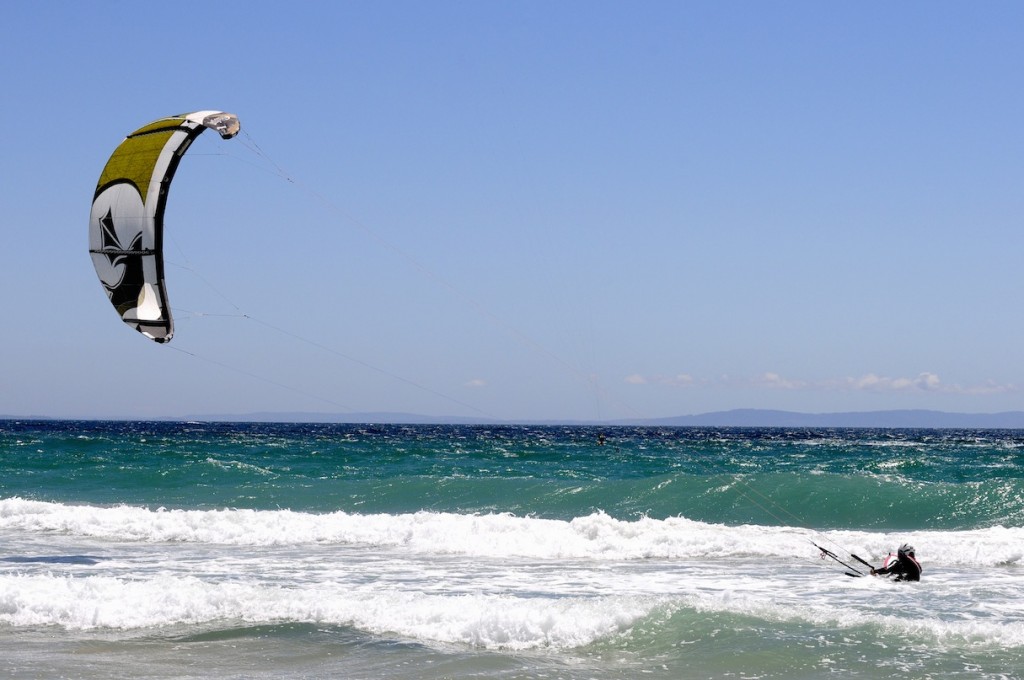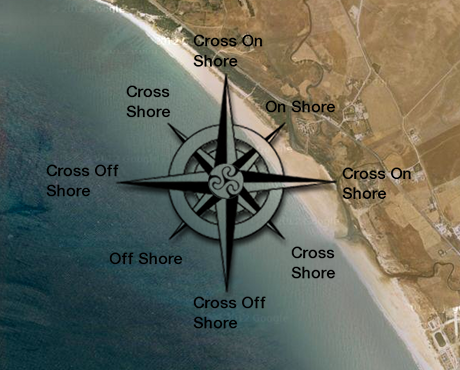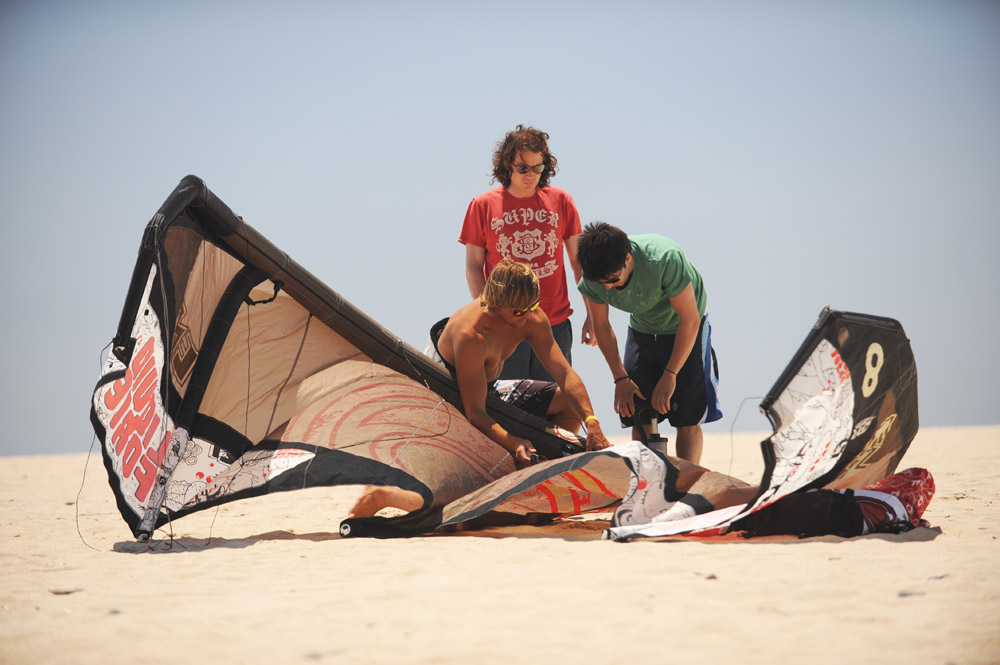
Now that some of you will be moving onto Leading Edge inflatable (LEI) kites, we’d better take some time to explain how to set these baby’s up, as it’s very different to the kites we’ve been using so far.
By now you should be happy with the concept of upwind and downwind. An object upwind is nearer to the source of the wind than an object downwind. Thus if person A is upwind of person B and person has not washed in a long time, then person B will be able to smell person A as the wind is blowing off the upwind person A onto the downwind person B.
We will be setting up our kites with the kite upwind and the lines running downwind to the bar. The reason for this will become clear when we have set the kite up.
First take out the kite. The first thing to look for is to examine the first strut you can find. The strut is one of the the inflatable condoms running the width (not length) of the kite. Have a look at how you put air into the strut. If there is a tube leading from the leading edge to the strut and no way to inflate the strut directly you have what is called a one pump system on your kite. Otherwise you’ll find a valve on the strut itself allowing you to inflate the strut directly.

One Pump
The main advantage of a one pump system is that it’s much quicker to inflate…I love them because I’m lazy. On the down side they do weight a bit more and can be a nightmare if you get a puncture.
If you have a one pump system you can simply take the kite out of the bag and roll it out with the leading edge (the large condom running the length of the kite) facing into the direction of the wind, with the struts on top facing skyward. Check all the tubes connecting the leading edge to the struts, they may well have some sort of gate system on them, if they do set these to open, if they don’t go and find out why they don’t have them from who ever you bought the kite from!
From here attach the pump leash to the leash attachment point normally found in the centre of the leading edge. Now as long as you have hold of the pump you have hold of the kite so by simply placing your feet on the cunningly crafted foot panels on the pump you can keep the kite in place with no hands!
Have a look at the valves on the leading edge of the kite. Normally you will one large valve with no type of stopper system, this is the dump valve used to get the air out quickly at the end of a session (so you can get to the pub quicker). The other valve should be smaller and may or may not have a stopper system.
You need to close the dump valve before you start to inflate the kite. Make sure the valve itself is clean and sand free (as sand will destroy valves as well!) and then fully close the valve. You do not need to push the valve into the kite (like on a lilo) but the valve should stay sticking all the way out, pushing the valve in causes damage to the bladder.
Get Pumpin’
Now simply fasten the pump nozzle into the inflate valve and start pumping. You will find that as the kite starts to form into its characteristic bowed shape the wind gets under the kite and the kite actually starts flying harmlessly in the smiley position, (you did attach the pump leash didn’t you?).
If its the first time you’ve inflated it some of the struts may not inflate properly because of kinks in the tubes running from the leading edge to the strut, straighten out the kinks and you should be gold (also check the gates are set to open before you start smashing things up).
No One Pump?
If you don’t have a one pump system, then roll the kite out like a towel, with the wind flowing over the length of the kite. You can then take a bit of sand and use it to secure the upwind wing tip of the kite only. Do not put sand all over the kite as not only is it unnecessary but can actually cause problems as the wind can now get under the kite and actually form the material into a sail shape causing the kite to take off. By securing it only at the upwind point you are ensuring the kite is simply a flag, and while it can still take off if you don’t secure it properly, once fully secured it will sit quite happily.
From there pump the struts up one by one, in no particular order and then inflate the leading edge. Half way through inflating the leading edge you’ll need to spin the kite around into the “smiley” position to prevent it from making you look like an idiot as it attempts to take off sideways.
Securing The Kite On The Beach
You want the kite to be as hard as you can effectively manage. Be more concerned about under inflating the kite than over inflating it, most bladders are built very well these days and it’s likely you’ll break the pump before you burst the bladder! The only exception to this is if you’re going to leave it sitting on a very hot beach for a long time (which I really wouldn’t recommend you do anyway) as the air will expand and could cause your kite to explode.
Some kites come with a recommended psi (for most it’s just damn hard!) and many pumps these days have a air pressure gauge so you do this with a high (ish) level of precision. If not drum skin tension is what your aiming for (probably harder than you think!).
Simply remove the pump leash from the kite (keeping hold of the kite whilst you do) and now holding the kite by the leading edge in the centre flip the kite over and lay it on the beach leading edge down with the wind flowing over the centre strut (or panel) of the kite so forcing the kite down onto the ground.
Take some sand and place it on the centre panel(s) of the kite. The windier it is the more sand you’ll need but as my CO used to say…’there’s no such thing as overkill’ put a tonne on and it’ll save you from potential embarrassment later as you’re picking your tattered kite out of that barbed wire fence or tree that looks so far away right now!
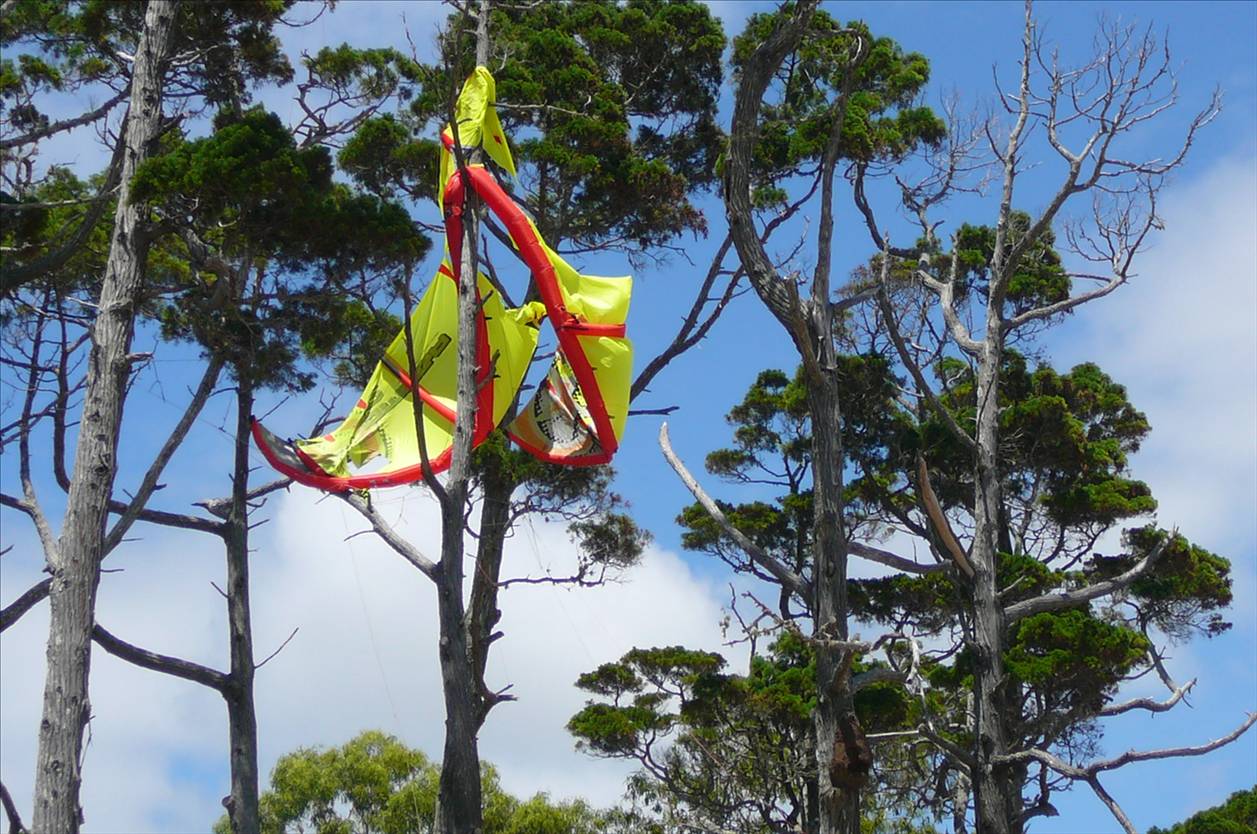
The Bridle
Now that the kite is sorted come round the back of the kite and take a look at the bridle. The bridle consists of the lines that run off the kite in triangle formations, where the lines from the bar will attach.
These should be free of knots and any pulleys should be clear of sand and free to run up and down the line. While you are there check the lines these pulleys run over that they are not worn, as soon as these start to show signs of wear and tear they should be replaced as they are one of the major fail points of any modern kite.
Once your happy with the bridle you’re ready to…
Sort the Bar Out
Now roll the bar and lines out downwind. We do this downwind so that once everything is set up we can easily look up our lines and check everything is attached to the right bit with no tangles and in case we haven’t put enough sand on our kite we will get another chance to rescue it from the barbed wire fence as we are in the way!
Once your lines are laid out seperate them and simply match the lines up with the corresponding pigtails on the kite. Note most bars are colour coded to ensure you get things the right way round. These are often coded using the nautical system of Port or left being red…”There’s no RED port LEFT in the bottle.”
Now because at this point we are effectively setting up our kite backwards (the kite will always fly downwind of you) the rule reverses, so when setting up the kite this way we ensure that the red side of the bar is on the right hand side.
Often the pigtails on the kite will be colour coded to match the bar so ensure you are attaching red pigtail to red pigtail and all should be cool!
